-
Courses
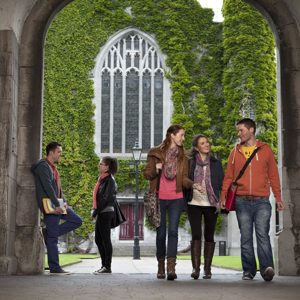
Courses
Choosing a course is one of the most important decisions you'll ever make! View our courses and see what our students and lecturers have to say about the courses you are interested in at the links below.
-
University Life
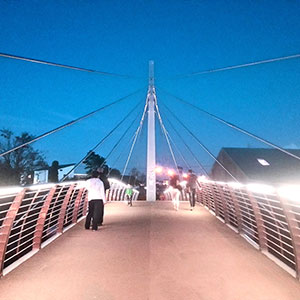
University Life
Each year more than 4,000 choose University of Galway as their University of choice. Find out what life at University of Galway is all about here.
-
About University of Galway
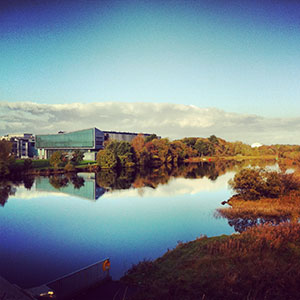
About University of Galway
Since 1845, University of Galway has been sharing the highest quality teaching and research with Ireland and the world. Find out what makes our University so special – from our distinguished history to the latest news and campus developments.
-
Colleges & Schools
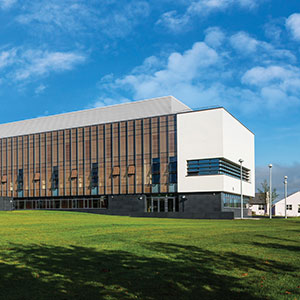
Colleges & Schools
University of Galway has earned international recognition as a research-led university with a commitment to top quality teaching across a range of key areas of expertise.
-
Research & Innovation

Research & Innovation
University of Galway’s vibrant research community take on some of the most pressing challenges of our times.
-
Business & Industry
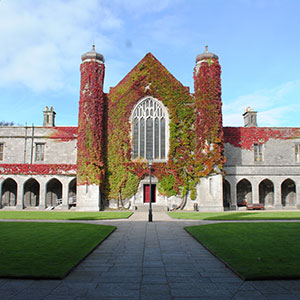
Guiding Breakthrough Research at University of Galway
We explore and facilitate commercial opportunities for the research community at University of Galway, as well as facilitating industry partnership.
-
Alumni & Friends
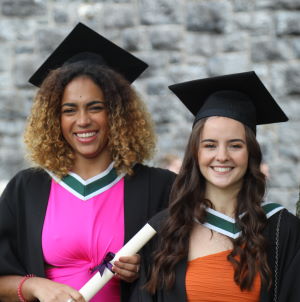
Alumni & Friends
There are 128,000 University of Galway alumni worldwide. Stay connected to your alumni community! Join our social networks and update your details online.
-
Community Engagement
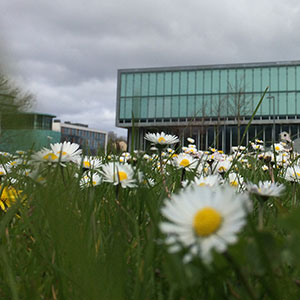
Community Engagement
At University of Galway, we believe that the best learning takes place when you apply what you learn in a real world context. That's why many of our courses include work placements or community projects.
Completed Projects
Innovative Design for the Future - Use and Reuse of Wood (Building) Components (InFutUReWood)
Start Date: 01/03/2019 End Date: 28/02/2022
Funder: Forestry Department of the Department of Agriculture, Food and Marine; EU H2020 Forest Value ERA-NET
Principal Investigator: Prof. Annette Harte
Project partners: Research Institutes of Sweden RISE (SE), Edinburgh Napier University (UK), Technical University of Munich (DE), Aalto University (FI), University College Dublin (IE), University of Ljubljana (SI), Technical University of Madrid (ES).
Researchers: Dr Caitríona Uí Chúláin (Post-doc); Dr Daniel F. Llana
Website: InFutUReWood Project
Objective: The objectives of the project are:
- To develop a method for ensuring future possibility of circulation of timber products with true consideration of the whole life-cycle, and practical industry issues at design, construction and deconstruction phases.
- To plan primary design to facilitate deconstruction rather than demolition, and to pay attention to the use of chemical treatments, adhesives and other synthetic materials – including to decide whether their use technically is necessary and avoid over-specification.
- To optimise the primary design to enhance resource efficiency as well as reduce environmental impacts along the life cycle (build and deconstruction)
- To allow grading for quality of recovered wood, and similarly variable new wood from more diverse sources, in a way that is compatible and equivalent to grading of new timber from main commercial species (including the basis in European standardisation)
- To identify potential new construction products using recovered timber.
- To examine the business, economic and environmental factors over the life-cycle to inform what is to be optimized, encouraged and avoided in design (to be described by a “rebuilding factor”).
- To inform current engineers, architects and wood-based construction product manufacturers through professional development, industry bodies, codes and standards.
Exploitation And Realisation of Thinnings from Hardwoods (EARTH)
Start Date: 01/03/2017 End Date: 30/4/2019
Funders: DAFM
Principal Investigators: Prof. Annette Harte
Research partner: Dr Ian Short (Teagasc)
Researcher: Dr Daniel Fernández Llana (Post-doc)
Objective: This project aims to investigate novel and potential added-value uses of Irish hardwood thinnings. This will be achieved by undertaking a study of current status of the resource to quantify the available dimensions from first and second thinnings. The physical and structural properties of the material will be determined through experimental testing. A drying and durability study will be carried out. Based on the information arising out of these investigations, potential end-uses of the material will be identified, both in roundwood form and as engineered wood products, in addition to wood energy products.
The influence of the fixing system configuration on the serviceability response of cross laminated timber floors
Start Date: 1/10/2014 End Date: 31/10/2018
Funder: NUI Galway – College of Engineering and Informatics
Principal Investigator: Prof. Annette Harte
Industrial Collaborator: KLH, Rothoblaas, Enterprise Ireland
Researchers: Caitríona Uí Chúláin (PhD)
Objective: The objective of the research is to characterise the boundary conditions imposed on timber floor systems due to the fixing configurations, and to determine their influence on the deflection and vibration behaviour of the floor.
The influence of silvicultural practices on mechanical properties of Irish timber
Start Date: 01/10/2015 End Date: 01/10/2019
Funders: Teagasc, DAFM
Principal Investigators: Prof. Annette Harte
Researcher partner: Dr N Farrelly (Teagasc)
Researcher: Luka Krajnc (PhD)
Objective: Forest management practices are currently based on optimising production volume rather than structural quality. Researchers at Teagasc have undertaken studies to determine the influence of various thinning practices on the growth and development of the forest crop. However, there are no comprehensive studies on the effect of silvicultural practices on the structural performance of Irish-grown timber. This study will endeavour to correlate the structural properties with different thinning systems across different tree species in order to optimise silvicultural practices that will allow, in future, an increase in yields of timber grown for construction purposes.
Commercialisation of Irish Cross-Laminated Timber (CICLT)
Start Date: 01/01/2017 End Date: 31/12/2017
Funder: DAFM
Principal Investigators: Prof. Annette Harte
Researchers: Dr Conan O’Ceallaigh (Post-doc)
Summary: In recent times there has been an increased demand for the use of sustainable construction materials to meet environmental targets related to energy use and emissions. One of the most promising construction materials meeting these targets is cross-laminated timber (CLT). The project ‘Innovation in Irish Timber Usage’ has confirmed that there is potential in using Irish Sitka spruce for CLT manufacture and this presents new opportunities for Irish timber in the home and export markets. A niche product with huge capability for commercialisation, a CLT modular floor system, was identified. This project further developed this product for launching on the market, further verification of mechanical performance has been carried out. In addition, suitable metallic connectors have been investigated when used in combination Irish made CLT flooring systems. This research has significantly improved the understanding of wall-floor connection behaviour and will aid the development of a high performance flooring system for lowest possible costs.
Impacts of faster growing forest on raw material properties with consideration of the potential effects of a changing climate on species choice (FASTFORESTS)
Start Date: 01/06/2014 End Date: 31/05/2017
Funder: EU FP7 Woodwisdom ERANET; DAFM
Principal Investigator: Prof. Annette Harte
Project partners: Dr C O’Reilly (UCD), Prof M Nieuwenhuis (UCD), Dr A Ni Dhubhain (UCD), Dr F Bruechert (FVA, DE); G Prévost (Abibois, FR); Dr J-D Lanvin (FCBA, FR); Dr J Moreau (ESB, FR)
Industrial Collaborator: ECC Sawmills
Researchers: Karlo Simic (PhD)
Objectives: This collaborative project between Ireland, France and Germany aims to:
- Use modelling approaches to present options of ensuring the quantity of future wood supply from the forest under the changing climate, using adopted tree species and provenances grown under sustainable management systems.
- Develop new approaches for allocation of raw material to end products, increasing efficiency in production and reducing waste.
- Identify means to improve social acceptance of intensively managed forests.
An in-situ assessing of heat loss through thermal bridging by means of infrared thermography technique (ITT)
Start Date: 15/11/2011 End Date: 30/06/2017
Funder: NUI Galway, Enterprise Ireland Innovation Voucher IV-2014-4203
Principal Investigator: Prof. Annette Harte
Research Collaborator: Dr Agnieszka Lechowska (Cracow University of Technology, Poland)
Industrial Collaborator: SIP Energy
Researchers: Gosia O’Grady (PhD)
Objective: This project was established with the objective to:
- Develop a measurement method that allows the heat flow rate through a thermal bridge in external building envelope and its the Ψ-value to be quantified by means of infrared thermography technique (ITT).
- Applying the methodology to indoor conditions for single and multiple thermal bridges.
- Adapting the methodology to outdoor conditions; investigating the influence of different wind velocities on the assessment of heat loss through thermal bridges using the ITT.
Quantifying the environmental impacts associated with the production of wood products from Irish forests
Start Date: 01/01/2012 End Date: 31/12/2016
Funder: IRC/Coillte; NUI Galway
Principal Investigator: Prof. Annette Harte
Researchers: Desmond Dolan (PhD)
Summary: This research involved undertaking a detailed investigation into the total environmental impacts associated with the production of both forestry and construction wood products using Life Cycle Assessment (LCA), a process based environmental assessment methodology. In addition, a national energy based 'Input-Output LCA' tool was developed in order to quantify the environmental effects of any product or service from a given industry based on its economic value. Using a hybrid of these two approaches, the 'top-down' Input-Output approach and the previously described process based or 'bottom-up' LCA approach, the total environmental impacts of the forestry and wood-based products were quantified. From these results, the comparative environmental advantages of sustainably harvested wood construction products were assessed by examining existing and planned structures over their whole life cycle.
Innovation in Irish Timber Usage (IITU)
Start Date: 01/01/2013 End Date: 31/07/2016
Funder: DAFM (10 C 207)
Principal Investigator: Prof. Annette Harte
Project Partner: Dr D McPolin (QUB)
Industrial Collaborators: SIP Energy
Researchers: Dr Karol Sikora (Post-doc NUIG), Conan O’Ceallaigh (PhD NUIG), Caoimhe O’Neill (PhD QUB)
Summary: In order to increase the utilisation of Irish timber in construction, research was carried to establish the mechanical and physical properties of the current forest output. It was found that the mechanical and physical properties of Irish Sitka spruce have not changed significantly over that last 25 years. MOE was found to be the limiting factor for strength classification. To investigate the potential for new added-value timber construction products, novel engineered wood products for which Irish timber is suitable were developed. Two key areas were addressed: (i) Fibre-Reinforced Polymer reinforced timber and (ii) Cross-Laminated Timber (CLT). The viability of using glued-in basalt fibre reinforced polymer rods as reinforcement for timber beams and connections between timber elements has been established. The long-term behaviour of such members has been characterised and moment connections were tested both for durability and for their suitability in an in-service application. Based on the findings of these experimental tests a guideline design procedures were established. Cross-laminated timber is a relatively new type of solid timber panel product with excellent load-carrying properties and is suitable for large-scale commercial buildings. In order to tap into the growing global demand for CLT, the potential use of Irish Sitka spruce in the production of CLT was investigated. A niche product for commercialisation, a CLT modular floor system, was identified. The main benefit over other floor systems is the significant reduction in installation time, a reduced labour requirement, consequently financial saving.















